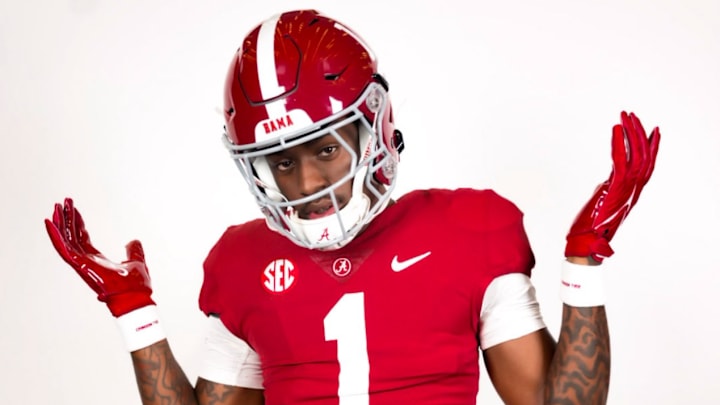Is a Wide Receiver's Height More Important Than Speed? Just a Minute

In this story:
Welcome to BamaCentral’s "Just a Minute," a video series featuring BamaCentral's Alabama beat writers. Multiple times a week, the writers will group up to provide their take on a topic concerning the Crimson Tide or the landscape of college sports.
Watch the above video as BamaCentral staff writer Hunter De Siver discusses a standout theme from Alabama football's three 2026 wide receiver commits.
Wide receivers come in many heights. Some are 6-foot-6 while others are 5-foot-9. That said, there are plenty of advantages and disadvantages for both.
For example, a 6-foot-6 pass-catcher has a greater ability to high-point a ball and make plays in contested defensive backfields. However, these tall receivers both in the NFL and college may not be the fastest at their position.
It's an opposite relationship with shorter receivers as they often display a burst of speed that cornerbacks struggle to keep up with and get open quicker. But when the ball is in the air and both players are slowing down, the receiver may not have the height and leaping ability to win that one-on-one battle.
Of course, there are plenty of athletes who have displayed elite speed despite being taller and others who have excelled at high-pointing a ball despite being smaller, including former Alabama standouts Julio Jones (6-foot-4), DeVonta Smith (6-foot) and Jaylen Waddle (5-foot-10). That said, Crimson Tide head coach Kalen DeBoer, general manager Courtney Morgan and the recruiting staff are playing their cards on one side of the spectrum so far for the 2026 class.
Alabama has landed three wide receiver commitments in as many days: 3-star Owen Cabell on Monday, 3-star Brian Williams Jr. on Tuesday, and perhaps most notably, 5-star Cederian Morgan on Wednesday. Cabell stands out at 6-foot-3, Williams is an imposing 6-foot-3 1/2 and Morgan towers at 6-foot-4.
Each of these three rising high school seniors have dominated opposing defensive backfields, and while that's made them highly touted recruits, college football, especially the Southeastern Conference is filled with cornerbacks that can challenge them in at least one full year from now.
So, two questions arise from this:
- Can these big receivers create separation with speed efficiently when they arrive at Alabama?
- If they can't do that, will they be able to fully use their natural gift of height on most targets?
What do you think? Should college football general managers recruit a wide receiver for height over speed or vice versa?
Read More:
-e882f59423c9f8542621542e07e7064b.JPG)
Hunter De Siver is the lead basketball writer for BamaCentral and has covered Crimson Tide football since 2024. He previously distributed stories about the NFL and NBA for On SI and was a staff writer for Missouri Tigers On SI and Cowbell Corner. Before that, Hunter generated articles highlighting Crimson Tide products in the NFL and NBA for BamaCentral as an intern in 2022 and 2023. Hunter is a graduate from the University of Alabama, earning a degree in sports media in 2023.
Follow HunterDeSiver